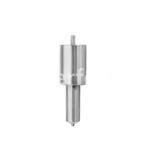Information injection-pump assembly
BOSCH
F 019 Z20 457
f019z20457
ZEXEL
101601-5664
1016015664
HINO
220006432A
220006432a
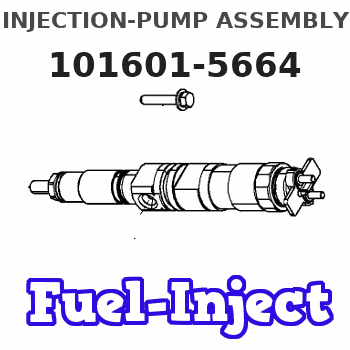
Rating:
Service parts 101601-5664 INJECTION-PUMP ASSEMBLY:
1.
_
7.
COUPLING PLATE
8.
_
9.
_
11.
Nozzle and Holder
23600-2133
12.
Open Pre:MPa(Kqf/cm2)
19.6{200}
15.
NOZZLE SET
Cross reference number
BOSCH
F 019 Z20 457
f019z20457
ZEXEL
101601-5664
1016015664
HINO
220006432A
220006432a
Zexel num
Bosch num
Firm num
Name
F 019 Z20 457
220006432A HINO
INJECTION-PUMP ASSEMBLY
H07D-A A * K 14BF PE6AD PE
H07D-A A * K 14BF PE6AD PE
Calibration Data:
Adjustment conditions
Test oil
1404 Test oil ISO4113 or {SAEJ967d}
1404 Test oil ISO4113 or {SAEJ967d}
Test oil temperature
degC
40
40
45
Nozzle and nozzle holder
105780-8140
Bosch type code
EF8511/9A
Nozzle
105780-0000
Bosch type code
DN12SD12T
Nozzle holder
105780-2080
Bosch type code
EF8511/9
Opening pressure
MPa
17.2
Opening pressure
kgf/cm2
175
Injection pipe
Outer diameter - inner diameter - length (mm) mm 6-2-600
Outer diameter - inner diameter - length (mm) mm 6-2-600
Overflow valve
131424-8320
Overflow valve opening pressure
kPa
108
88
128
Overflow valve opening pressure
kgf/cm2
1.1
0.9
1.3
Tester oil delivery pressure
kPa
157
157
157
Tester oil delivery pressure
kgf/cm2
1.6
1.6
1.6
Direction of rotation (viewed from drive side)
Right R
Right R
Injection timing adjustment
Direction of rotation (viewed from drive side)
Right R
Right R
Injection order
1-4-2-6-
3-5
Pre-stroke
mm
3.8
3.77
3.83
Beginning of injection position
Drive side NO.1
Drive side NO.1
Difference between angles 1
Cal 1-4 deg. 60 59.75 60.25
Cal 1-4 deg. 60 59.75 60.25
Difference between angles 2
Cyl.1-2 deg. 120 119.75 120.25
Cyl.1-2 deg. 120 119.75 120.25
Difference between angles 3
Cal 1-6 deg. 180 179.75 180.25
Cal 1-6 deg. 180 179.75 180.25
Difference between angles 4
Cal 1-3 deg. 240 239.75 240.25
Cal 1-3 deg. 240 239.75 240.25
Difference between angles 5
Cal 1-5 deg. 300 299.75 300.25
Cal 1-5 deg. 300 299.75 300.25
Injection quantity adjustment
Adjusting point
-
Rack position
11.5
Pump speed
r/min
850
850
850
Average injection quantity
mm3/st.
76.1
74.5
77.7
Max. variation between cylinders
%
0
-3.5
3.5
Basic
*
Fixing the rack
*
Standard for adjustment of the maximum variation between cylinders
*
Injection quantity adjustment_02
Adjusting point
H
Rack position
9+-0.5
Pump speed
r/min
250
250
250
Each cylinder's injection qty
mm3/st.
15
14
16
Fixing the rack
*
Standard for adjustment of the maximum variation between cylinders
*
Injection quantity adjustment_03
Adjusting point
A
Rack position
R1(11.5)
Pump speed
r/min
850
850
850
Average injection quantity
mm3/st.
76.1
75.1
77.1
Basic
*
Fixing the lever
*
Injection quantity adjustment_04
Adjusting point
B
Rack position
R1+0.45
Pump speed
r/min
1450
1450
1450
Average injection quantity
mm3/st.
86.8
82.8
90.8
Fixing the lever
*
Injection quantity adjustment_05
Adjusting point
C
Rack position
R1-0.25
Pump speed
r/min
580
580
580
Average injection quantity
mm3/st.
62.8
58.8
66.8
Fixing the lever
*
Injection quantity adjustment_06
Adjusting point
D
Rack position
R1+0.45
Pump speed
r/min
1150
1150
1150
Average injection quantity
mm3/st.
85.4
81.4
89.4
Fixing the lever
*
Injection quantity adjustment_07
Adjusting point
I
Rack position
-
Pump speed
r/min
100
100
100
Average injection quantity
mm3/st.
140
140
150
Fixing the lever
*
Rack limit
*
Timer adjustment
Pump speed
r/min
925--
Advance angle
deg.
0
0
0
Load
1/4
Remarks
Start
Start
Timer adjustment_02
Pump speed
r/min
875
Advance angle
deg.
0.3
Load
1/4
Timer adjustment_03
Pump speed
r/min
(920--)
Advance angle
deg.
1
0.7
1.3
Load
4/4
Timer adjustment_04
Pump speed
r/min
1175+50
Advance angle
deg.
1
0.7
1.3
Load
3/4
Timer adjustment_05
Pump speed
r/min
1400+50
Advance angle
deg.
5.5
5.2
5.8
Load
4/4
Remarks
Finish
Finish
Test data Ex:
Governor adjustment
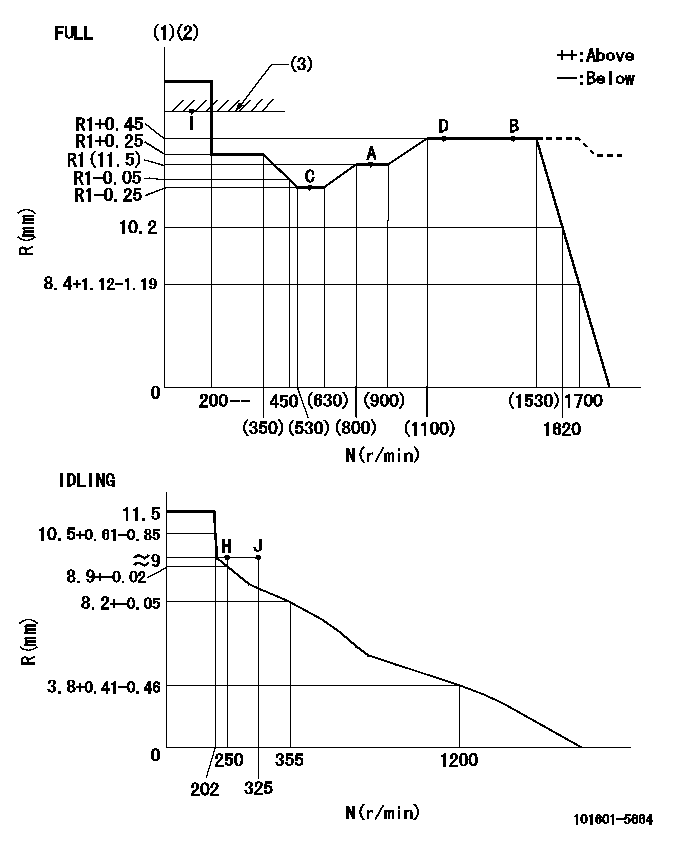
N:Pump speed
R:Rack position (mm)
(1)Torque cam stamping: T1
(2)Tolerance for racks not indicated: +-0.05mm.
(3)RACK LIMIT
----------
T1=H14
----------
----------
T1=H14
----------
Speed control lever angle
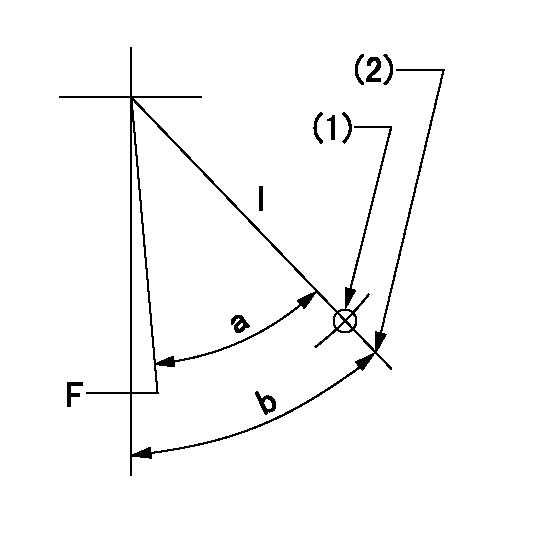
F:Full speed
I:Idle
(1)Use the hole at R = aa
(2)Stopper bolt set position 'H'
----------
aa=55mm
----------
a=(36.5deg)+-3deg b=40deg+-5deg
----------
aa=55mm
----------
a=(36.5deg)+-3deg b=40deg+-5deg
Stop lever angle
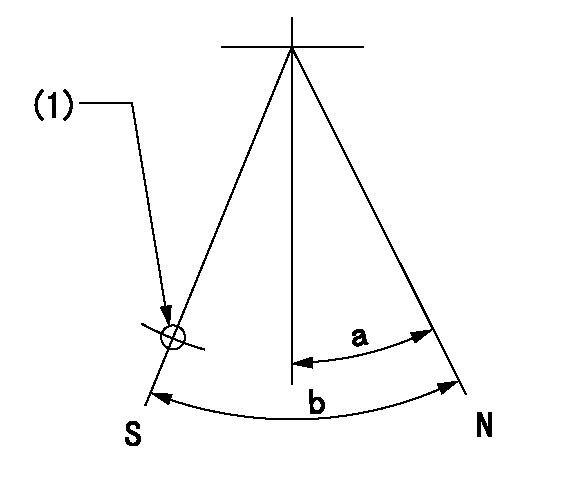
N:Pump normal
S:Stop the pump.
(1)Use the hole at R = aa
----------
aa=35mm
----------
a=14.5deg+-5deg b=40deg+-5deg
----------
aa=35mm
----------
a=14.5deg+-5deg b=40deg+-5deg
0000001501 AIR CYLINDER

(A): Speed lever
(B): Set bolt
(C): air cylinder
(D): nut
(E): fix
1. Air cylinder adjustment procedure
(1)With the speed lever in the idling position, temporarily set the clearance between speed lever (A) and set bolt (B) at approximately L1.
(2)Set the speed to N1 and supply positive pressure P1 to the air cylinder (C).
(3)Gradually push set bolt (B) out (approximately L2) and tighten nut (D) where the speed is N2 and the rack position is Ra.
(4)Apply positive pressure P1 several times.
(5)Confirm that the lever returns to the idle position at positive pressure P2.
(6)Also, confirm that the rack position is Rb at air pressure P1.
----------
L1=5mm L2=- Ra=8.8+-0.1mm Rb=8.8+-0.1mm N1=475r/min N2=475r/min P1=392+98kPa(4+1kgf/cm2) P2=0kPa(0kgf/cm2)
----------
----------
L1=5mm L2=- Ra=8.8+-0.1mm Rb=8.8+-0.1mm N1=475r/min N2=475r/min P1=392+98kPa(4+1kgf/cm2) P2=0kPa(0kgf/cm2)
----------
Timing setting
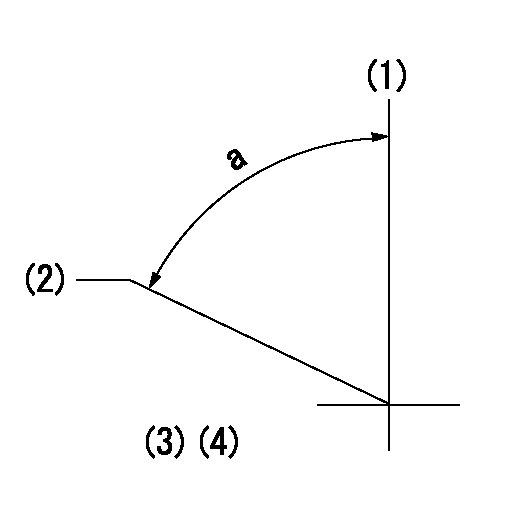
(1)Pump vertical direction
(2)Coupling's key groove position at No 1 cylinder's beginning of injection
(3)-
(4)-
----------
----------
a=(50deg)
----------
----------
a=(50deg)
Information:
Your engine may not have the same or all of the gauges described. The illustrations shown are of typical gauges. Refer to the OEM Owner Manual for information on the layout of your gauge package. Gauges provide a "look" inside the engine. Be sure they are in good working order. Determine what is the "normal" operating range by observing your gauges over a period of time.Noticeable changes in gauge readings are an indicator of potential gauge or engine problems. This also applies to gauge readings that have changed significantly but are still within specifications. The cause of any sudden or significant change in the readings should be determined and corrected. Contact your Caterpillar dealer for assistance as needed.
Tachometer - Indicates engine rpm. When the throttle control lever is moved to the full speed position without load, the engine is running at high idle. When the throttle control lever is at the full speed position with maximum rated load, the engine is running at the full load rpm (assuming the engine and load are matched).The engine can be operated at high idle without damage, but should never be allowed to exceed high idle rpm with little or no load. The high idle rpm, and the full load rpm, are stamped on the engine's 9L6531 Information Plate.
Service Hour Meter - Indicates the total number of clock hours the engine has operated.
Engine Oil Pressure - Indicates engine oil pressure. The pressure reading will be greatest after starting a cold engine. Oil pressure will decrease as the engine warms while idling. As the engine speed is increased to full load speed, oil pressure will increase and stabilize. Normal oil pressure should read 240 to 480 kPa (35 to 70 psi) when the engine is running between 600 and 2100 rpm with SAE 10W30 oil, at operating oil temperature of 105°C (220°F).* 100 to 200 kPa (15 to 30 psi) below 600 rpmIf the gauge reading fluctuates after the load is stable:1. Remove the load.2. Reduce engine speed to low idle.3. Check and maintain oil level.
Engine Jacket Water Temperature - Indicates engine coolant water temperature. The gauge should normally indicate between 70 and 90°C (170 and 195°F). The water temperature reading may vary according to load, but should never exceed the boiling temperature for the pressurized system being used. Maximum allowable temperature is 99°C (210°F).
Never add coolant to an overheated engine; allow to cool first. Engine damage and/or personal injury may occur.
The jacket water inlet temperature is regulated with thermostats in the system. Always operate the engine with thermostats installed. Refer to the Cooling System-Thermostats topic in the Maintenance Section of this manual.Somewhat higher temperatures than described above may occur under certain conditions. Maximum allowable operating temperature is 105°C (220°F) with the cooling system pressurized. If the engine is operating above normal range and steam becomes apparent:1. Reduce the load and engine rpm.2. Inspect for cooling system for leaks.3. Determine if the engine must be shutdown immediately or if the engine can
Tachometer - Indicates engine rpm. When the throttle control lever is moved to the full speed position without load, the engine is running at high idle. When the throttle control lever is at the full speed position with maximum rated load, the engine is running at the full load rpm (assuming the engine and load are matched).The engine can be operated at high idle without damage, but should never be allowed to exceed high idle rpm with little or no load. The high idle rpm, and the full load rpm, are stamped on the engine's 9L6531 Information Plate.
Service Hour Meter - Indicates the total number of clock hours the engine has operated.
Engine Oil Pressure - Indicates engine oil pressure. The pressure reading will be greatest after starting a cold engine. Oil pressure will decrease as the engine warms while idling. As the engine speed is increased to full load speed, oil pressure will increase and stabilize. Normal oil pressure should read 240 to 480 kPa (35 to 70 psi) when the engine is running between 600 and 2100 rpm with SAE 10W30 oil, at operating oil temperature of 105°C (220°F).* 100 to 200 kPa (15 to 30 psi) below 600 rpmIf the gauge reading fluctuates after the load is stable:1. Remove the load.2. Reduce engine speed to low idle.3. Check and maintain oil level.
Engine Jacket Water Temperature - Indicates engine coolant water temperature. The gauge should normally indicate between 70 and 90°C (170 and 195°F). The water temperature reading may vary according to load, but should never exceed the boiling temperature for the pressurized system being used. Maximum allowable temperature is 99°C (210°F).
Never add coolant to an overheated engine; allow to cool first. Engine damage and/or personal injury may occur.
The jacket water inlet temperature is regulated with thermostats in the system. Always operate the engine with thermostats installed. Refer to the Cooling System-Thermostats topic in the Maintenance Section of this manual.Somewhat higher temperatures than described above may occur under certain conditions. Maximum allowable operating temperature is 105°C (220°F) with the cooling system pressurized. If the engine is operating above normal range and steam becomes apparent:1. Reduce the load and engine rpm.2. Inspect for cooling system for leaks.3. Determine if the engine must be shutdown immediately or if the engine can
